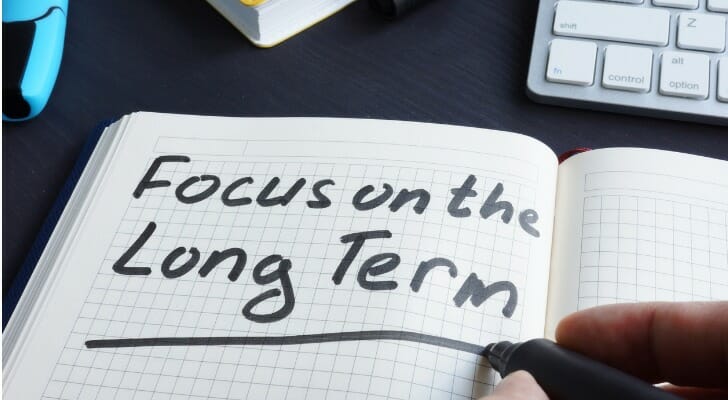There is a lot to consider as you approach retirement age, and taxes likely top the list. After all, the more taxes you pay in retirement, the less money you have for your living expenses. If you want to improve your financial situation, these strategies can help you reduce your tax liability in retirement.
A financial advisor can help you refine your tax strategy when planning for retirement.
1. Take Required Distributions on Time
It is important that you begin withdrawing money from your traditional 401(k)s and IRAs by the time you are 73 years old. These mandatory withdrawals are known as required minimum distributions (RMDs).
RMDs have specific requirements, including these.
- You must take your first RMD by April 1 of the year after you turn 73.
- If you are still working beyond age 73 and own no more than 5% of the company you work for, you can delay withdrawals from your 401(k) until you retire. This exception does not apply to IRAs.
- Starting in 2033, the required age to begin RMDs will increase to 75.
Need help calculating your RMDs? Avoid guesswork and calculate your exact RMD with our simple tool below:
Required Minimum Distribution (RMD) Calculator
Estimate your next RMD using your age, balance and expected returns.
RMD Amount for IRA(s)
RMD Amount for 401(k) #1
RMD Amount for 401(k) #2
About This Calculator
This calculator estimates RMDs by dividing the user's prior year's Dec. 31 account balance by the IRS Distribution Period based on their age. Users can enter their birth year, prior-year balances and an expected annual return to estimate the timing and amount of future RMDs.
For IRAs (excluding Roth IRAs), users may combine balances and take the total RMD from one or more accounts. For 401(k)s and similar workplace plans*, RMDs must be calculated and taken separately from each account, so balances should be entered individually.
*The IRS allows those with multiple 403(b) accounts to aggregate their balances and split their RMDs across these accounts.
Assumptions
This calculator assumes users have an RMD age of either 73 or 75. Users born between 1951 and 1959 are required to take their first RMD by April 1 of the year following their 73rd birthday. Users born in 1960 and later must take their first RMD by April 1 of the year following their 75th birthday.
This calculator uses the IRS Uniform Lifetime Table to estimate RMDs. This table generally applies to account owners age 73 or older whose spouse is either less than 10 years younger or not their sole primary beneficiary.
However, if a user's spouse is more than 10 years younger and is their sole primary beneficiary, the IRS Joint and Last Survivor Expectancy Table must be used instead. Likewise, if the user is the beneficiary of an inherited IRA or retirement account, RMDs must be calculated using the IRS Single Life Expectancy Table. In these cases, users will need to calculate their RMD manually or consult a finance professional.
For users already required to take an RMD for the current year, the calculator uses their account balance as of December 31 of the previous year to compute the RMD. For users who haven't yet reached RMD age, the calculator applies their expected annual rate of return to that same prior-year-end balance to project future balances, which are then used to estimate RMDs.
This RMD calculator uses the IRS Uniform Lifetime Table, but certain users may need to use a different IRS table depending on their beneficiary designation or marital status. It's the user's responsibility to confirm which table applies to their situation, and tables may be subject to change.
Actual results may vary based on individual circumstances, future account performance and changes in tax laws or IRS regulations. Estimates provided by this calculator do not guarantee future distribution amounts or account balances. Past performance is not indicative of future results.
SmartAsset.com does not provide legal, tax, accounting or financial advice (except for referring users to third-party advisers registered or chartered as fiduciaries ("Adviser(s)") with a regulatory body in the United States). Articles, opinions and tools are for general informational purposes only and are not intended to provide specific advice or recommendations for any individual. Users should consult their accountant, tax advisor or legal professional to address their particular situation.
Failing to withdraw the minimum amount by the deadline will result in a 25% penalty on the amount that should have been withdrawn. However, if you correct your mistake with the IRS within two years of the missed distribution, the IRS assesses only a 10% penalty, instead.
You will also owe income tax on the distribution. All of that adds up to a solid incentive to take your RMDs on time so you can reduce your tax liability in retirement.
2. Understand Your Tax Bracket
Even during retirement, there is a good chance you will still need to pay taxes. Your Social Security benefits may be taxable if your combined income (one-half of your benefits plus all other taxable income and tax-exempt interest) exceeds the base amount for your filing status, as set by the IRS.
Social Security Tax Liability
| Type of Filer | Income Limit | Tax |
|---|---|---|
| Individual | Up to $25,000 | 0% |
| $25,000 to $34,000 | Up to 50% of benefits | |
| Above $34,000 | Up to 85% of benefits | |
| Married couples filing jointly | Up to $32,000 | 0% |
| $32,000 and $44,000 | Up to 50% of benefits | |
| Above $44,000 | Up to 85% of benefits |
The more money you report to the IRS per year, the higher your tax bracket. This is especially important if you plan to withdraw money from an IRA, 401(k) or a pension.
If you find yourself on the edge of a tax bracket, you may want to withdraw a little less from your taxable accounts or increase your deductions. This may enable you to remain in a lower tax bracket so you can reduce your tax bill.
If you have a Roth IRA, your withdrawals are tax-free.
3. Make Early Withdrawals
Your financial advisor may recommend taking smaller withdrawals from your retirement accounts in your 60s. This strategy helps distribute your tax burden over several years, potentially keeping you in a lower tax bracket and reducing your overall lifetime tax liability.
It can be a good idea to time these withdrawals during years when your income is naturally lower. For example, if you have retired but are not yet receiving Social Security benefits, this period can be an ideal opportunity to draw from your retirement accounts.
4. Invest in Tax-Free Bonds

Many retirees have diversified portfolios that include bonds. This is because bonds are generally considered less risky than stocks. Tax-exempt bonds allow you to keep some of your retirement savings invested while still enjoying some growth and tax benefits.
There are several types of tax-exempt bonds.
Any bond interest earned must be reported when you file taxes, although your exact tax liability will depend on the type of bond you have. If you hold taxable bonds in your portfolio, consider the timing of when you sell those investments to minimize your capital gains tax.
5. Invest for the Long-Term
A capital gain occurs when you sell an asset for more than what you originally purchased it for. How much tax you pay depends on when you initially bought the asset.
- Short-term capital gains tax applies to investments held less than one year.
- Long-term capital gains tax applies to investments held more than one year.
For short-term capital gains, the tax rate is the same as your ordinary income tax rate. Therefore, you may pay as much as 37%, depending on your tax bracket. If you hold off and sell the asset after a year, however, you will be taxed at 0%, 15% or 20% depending on your income level.
6. Move to a Tax-Friendly State
If you have the means to do so, you may consider moving to a state that imposes a lighter tax burden on its residents.
Alaska, Montana, Oregon, New Hampshire and Delaware, for instance, do not have sales tax. This can help you save you money on day-to-day needs, such as groceries or household items.
While some states are known for low property taxes, others do not collect personal income tax. These are some of the best states to retire for taxes:
If you are contemplating a move, consider the state’s overall cost of living and not just the tax outlook. Florida, for example, has no income tax, but its cost of living is 10% higher1 than the rest of the U.S. The Sunshine State is also experiencing an insurance crisis,2 leaving many homeowners to forego coverage on their homes or pay exorbitant rates.
Looking at the full picture can help you decide whether the tax benefits a state offers may merit a move.
7. Convert to a Roth IRA Gradually
A Roth IRA conversion makes it possible for people to contribute to a Roth account when they would otherwise be ineligible. Conversions open the door to tax-free withdrawals in retirement, but they are not tax-free. If you are moving traditional IRA dollars to a Roth account, you will owe taxes on the earnings at the time of the conversion.
This can lead to a sizable tax bill if you convert all of your savings at once. Instead, gradual Roth conversions can allow you to move your savings a little at a time so any resulting tax liability is manageable.
This strategy is especially useful in the early years of retirement when income may be lower and you have not yet begun collecting Social Security or taking RMDs. In addition to reducing future taxable income, smaller traditional account balances may reduce how much of your Social Security income is subject to tax and also lower your exposure to the Medicare income-related monthly adjustment amount (IRMAA).
Roth accounts also offer flexibility with no RMDs during your lifetime. This can help with estate planning and passing assets to heirs tax-free under current law.
Bottom Line

When you retire, you will hopefully have investments that are generating income for you. However, it is still important to consider how to best preserve that income by lowering your tax liability. By carefully planning for retirement taxes and making shrewd decisions, you should have more money in your pockets and more breathing room so you can truly enjoy retirement.
Tax-Efficiency Tips
- Philanthropic retirees who give to charity every year may consider making qualified charitable distributions (QCDs). These payments, which come directly from your IRA, are sent to qualified charities. While they can satisfy your RMD responsibility, the QCD isn’t considered part of your taxable income and can limit your tax liability.
- Harvesting the losses in your portfolio can help lower your capital gains tax bill and keep more of your profits. Use our Capital Gains Tax Calculator to get a sense of how much you may owe when selling an investment.
- Need help managing your investments and optimizing your tax strategy? A financial advisor can help. Finding a financial advisor doesn’t have to be hard. SmartAsset’s free tool matches you with vetted financial advisors who serve your area, and you can have a free introductory call with your advisor matches to decide which one you feel is right for you. If you’re ready to find an advisor who can help you achieve your financial goals, get started now.
Photo credit: ©iStock.com/kate_sept2004, ©iStock.com/coldsnowstorm, ©iStock.com/designer491
